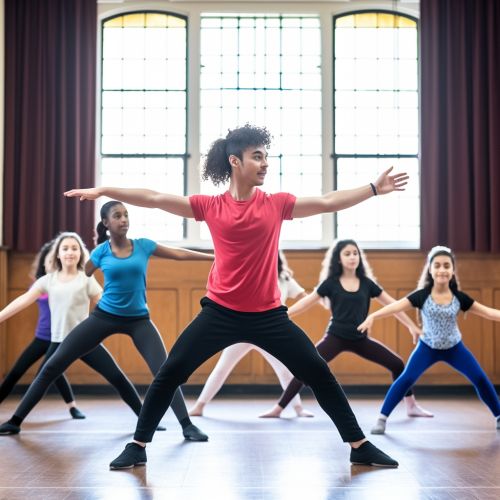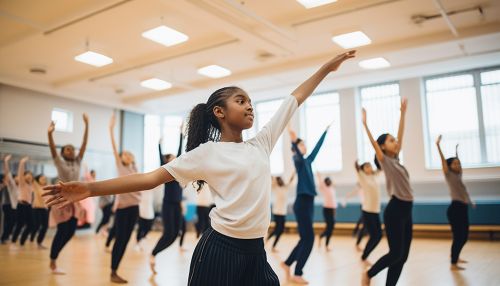Dance in education
Introduction
Dance in education is a multidisciplinary approach that integrates movement and rhythm with the learning process. It is a form of kinesthetic learning where students are encouraged to use their bodies to express ideas, emotions, and understand new concepts. Dance in education is not limited to teaching dance as an art form, but also uses dance and movement in teaching other subjects such as mathematics, science, language arts, and social studies.
History
The integration of dance in education has a long history, dating back to the ancient civilizations of Greece and Rome. In these societies, dance was considered an essential part of education, used not only for physical training but also for developing rhythm, coordination, and a sense of community. In the 20th century, pioneers such as Laban and Delsarte contributed significantly to the development of dance education, emphasizing the importance of movement and expression in learning.


Dance Education Models
There are several models of dance education, each with its own unique approach and objectives. These include:
Creative Movement
Creative movement is a form of dance education that encourages students to explore movement and express themselves creatively. It is often used in early childhood education to develop physical skills, stimulate imagination, and promote emotional and social development.
Dance Integration
Dance integration is a model where dance is integrated into the curriculum of other subjects. For example, students might learn about the water cycle in science by creating a dance that represents evaporation, condensation, and precipitation.
Dance as an Art Form
In this model, students learn dance as an art form. They learn different dance styles, techniques, and choreography. They also learn about the history and cultural significance of different dances.
Benefits of Dance in Education
Dance in education has numerous benefits for students. These include:
Physical Benefits
Dance is a physical activity that promotes fitness, flexibility, coordination, and body awareness. It also helps to improve posture and reduce the risk of obesity.
Cognitive Benefits
Dance helps to enhance cognitive skills such as memory, attention, and problem-solving. It also promotes creativity and imagination.
Social-Emotional Benefits
Dance encourages self-expression and emotional exploration. It also fosters social skills such as cooperation, communication, and empathy.
Challenges and Controversies
Despite its benefits, the integration of dance in education faces several challenges. These include a lack of funding, a lack of trained dance educators, and a lack of recognition of dance as a valuable part of the curriculum. There is also controversy over the appropriateness of certain types of dance in the school setting.
Future Directions
The future of dance in education is promising, with increasing research supporting its benefits and more schools integrating dance into their curriculum. There is also a growing trend towards inclusive dance education, which aims to make dance accessible to all students, regardless of their abilities or disabilities.
